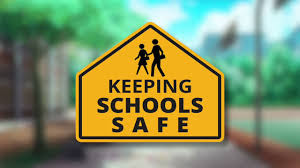Like any other aspect of life, safety can vary among different college campuses. While the vast majority of colleges prioritize the safety and well-being of their students, there have been instances of crime and safety concerns on some campuses. It's important to do your research and take precautions to ensure your safety while attending college. Here are some steps you can take:
List of California Schools Located Near Dangerous Intersections
BadIntersections.com has been building a database of notoriously dangerous intersections for the last 3 years. This database has grown to over 11,000 locations of hazardous pedestrian, car, and bike intersections. The map aggregates data from stories covered by the media and intersection flagged by local DOT's.
Which Countries Have The Most Dangerous Schools Besides The United States?
Determining the most dangerous countries for students to attend school can be a complex task as it involves considering various factors such as conflict, violence, terrorism, crime rates, and safety infrastructure. Conditions can change over time, and rankings may vary depending on the specific criteria used. However, based on available data and historical context, here are some countries that have faced significant challenges in terms of school safety:
8 Reasons Why There Might Be More School Shootings
The increase in shootings is a complex issue that has multiple factors. Here are some possible reasons:
How Safe Are Public Schools Today?
The safety of public schools today can vary depending on a number of factors, such as the location of the school, the size of the school, and the policies and procedures in place to ensure the safety of students and staff.
What Is Public Service Loan Forgiveness?
Public Service Loan Forgiveness (PSLF) is a federal program that forgives the remaining balance on certain federal student loans for borrowers who work full-time for qualifying public service employers. The program was created in 2007 as part of the College Cost Reduction and Access Act (CCRAA) and is intended to incentivize borrowers to pursue public service careers by offering loan forgiveness after a certain period of time.






